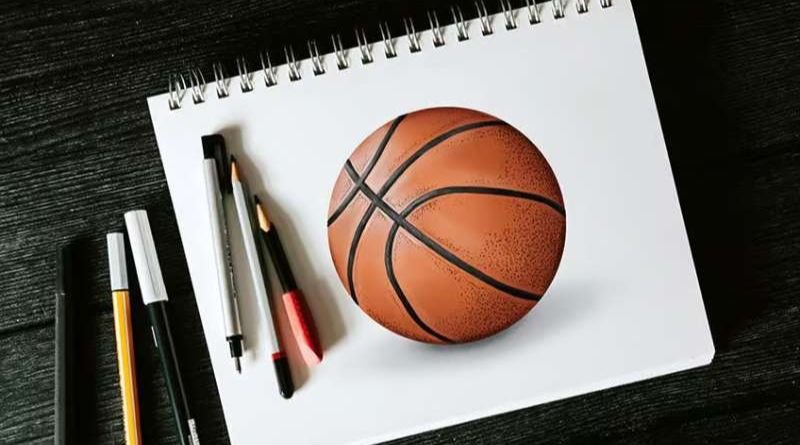Drawing basketball scenes can be a fun and rewarding way to express your love for the sport. Whether you’re a seasoned artist or a beginner, understanding the basics of basketball anatomy, movement, and equipment will help you create more dynamic and realistic drawings. This article will explore various aspects of drawing basketball, including techniques, tips, and common elements to consider when illustrating the game.
Understanding the Basics of Basketball
Before you start drawing, it’s essential to familiarize yourself with the fundamental elements of basketball. Here are some key components to consider:
1. The Basketball Court
- Dimensions and Markings: A standard basketball court is 94 feet long and 50 feet wide. It features important markings such as the three-point line, free-throw line, and key area (the painted lane).
- Hoops: Each end of the court has a hoop that is 10 feet above the ground. Understanding the height and dimensions of the hoop is crucial for accurate drawings.
2. The Players
- Positions: Basketball players generally fall into five main positions: point guard, shooting guard, small forward, power forward, and center. Each position has different roles and responsibilities, which can influence their posture and movements during gameplay.
- Movement: Basketball is a fast-paced sport characterized by quick movements, dribbling, shooting, and passing. Observing how players move on the court can enhance your drawings’ dynamism.
3. Equipment
- Basketball: Familiarize yourself with the shape and texture of a basketball. It is spherical and has a distinct orange color with black seams.
- Uniforms: Players typically wear jerseys and shorts, often featuring their team’s colors and logo. Attention to detail in the uniforms can add realism to your drawings.
Techniques for Drawing Basketball Scenes
1. Sketching the Basic Shapes
Start by sketching the basic shapes to establish the composition of your drawing. Use simple geometric forms to outline the players, the court, and the basketball. For example:
- Players: Use ovals for the heads, rectangles for the bodies, and lines for limbs to capture poses and movement.
- Hoops and Court: Use straight lines to outline the court and circular shapes for the hoops.
2. Capturing Movement
To portray the dynamic nature of basketball, focus on the players’ poses and body language. Consider the following:
- Action Poses: Draw players in mid-action—jumping, dribbling, or shooting. Capture the tension in their muscles and the extension of their limbs.
- Perspective: Experiment with different angles to create a sense of depth. A low-angle view can make the players look larger than life, while a bird’s-eye view provides a comprehensive look at the court.
3. Adding Details
Once you’ve established the basic shapes and poses, add details to enhance the realism of your drawing:
- Facial Expressions: Illustrate players’ expressions to convey emotions like concentration, determination, or excitement.
- Textures: Use shading techniques to create the illusion of depth and texture on the basketball, uniforms, and court surface.
4. Coloring Your Drawing
If you choose to add color, consider the following:
- Color Palette: Use team colors for uniforms and realistic shades for the basketball and court.
- Shading and Highlights: Apply darker shades in shadowed areas and lighter colors where light hits, giving your drawing a three-dimensional look.
Common Challenges and Solutions
1. Proportions
Challenge: Getting the proportions of the players correct can be tricky.
Solution: Use reference images to study the proportions of athletes and practice drawing basic figures in various poses.
2. Movement
Challenge: Capturing the fluidity of movement can be difficult.
Solution: Study videos of basketball games or practice drawing from live games to better understand how players move.
3. Detail Overload
Challenge: Adding too many details can clutter your drawing.
Solution: Focus on the most important elements of your composition and simplify less critical details.
FAQs About Drawing Basketball
Q: What materials do I need to start drawing basketball?
A: You can start with basic materials like pencils, erasers, sketch paper, and optionally, colored pencils or markers for coloring.
Q: How can I improve my basketball drawing skills?
A: Practice regularly, study reference images, and observe real-life basketball games to enhance your understanding of movement and anatomy.
Q: Are there any specific resources or tutorials for drawing basketball?
A: Many online tutorials and art books focus on sports drawing. Look for instructional videos on platforms like YouTube or websites dedicated to art education.
Q: How can I capture the intensity of a basketball game in my drawings?
A: Focus on action poses, facial expressions, and dynamic compositions to convey the excitement and intensity of the game.
Q: Should I focus on drawing players or the overall scene?
A: Both approaches can be effective! You can create individual player portraits or depict an entire game scene, depending on your interests and skill level.
Conclusion
Drawing basketball is a rewarding way to combine your artistic skills with your passion for the sport. By understanding the fundamentals of basketball, practicing various techniques, and capturing the energy of the game, you can create compelling illustrations that showcase your talent. Remember, the key to improvement is practice, observation, and a willingness to experiment with your art. So grab your materials and start drawing—your basketball masterpiece awaits!
